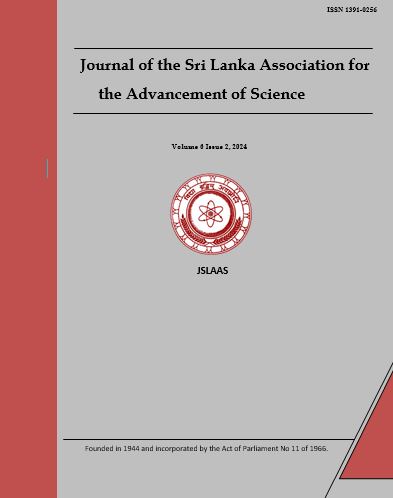Growth and Yield Performances of Cabbage Grown under a Protected House in Low Country Wet Zone of Sri Lanka as Affected by Artificial Lights and Rate of Albert Fertilizer
DOI:
https://doi.org/10.5281/zenodo.14586344Keywords:
Albert fertilizer, artificial light, automated protected house, CabbageAbstract
A study was conducted in two automated protected houses at Faculty of Agriculture, University of Ruhuna, Sri Lanka to investigate the effect of artificial light supplementation (using LED light source) and rate of Albert fertilizer on growth and yield of Cabbage. The experiment was conducted in a two-factor factorial (2 x 2) Completely Randomized Design with five replicates. The tested two factors were light (with and without artificial lights) and rate of Albert fertilizer (1.0 g/plant/day and 2.0 g/plant/day). These two fertilizer rates were selected based on the best performed fertilizer rates, reported in a previous study. Thus, present study aims to find the effect of previously selected two fertilizer rates and artificial lights on growth and yield of Cabbage. Growth and yield parameters were measured and collected data were analyzed using ANOVA. Subsequently, means were separated by least significant difference (LSD) at 5% probability level. Results revealed that there is no interaction effect between rate of fertilizer and artificial lights on growth or yield parameters of cabbage. However, both growth and yield parameters of cabbage were significantly affected at least by one main factor. Plant height and canopy diameter were significantly increased by artificial lights. Significantly highest number of loose leaves per plant was recorded by 2.0 g/plant/day. 1.0 g/plant/day fertilizer rate and artificial lights recorded significantly highest total above ground biomass yield, cabbage head weight and head perimeter. Therefore, greater yields from cabbage can be obtained by applying Albert fertilizer 1.0 g/plant/day and artificial light enhanced the yield of cabbage.

Downloads
Published
How to Cite
Issue
Section
License
Copyright (c) 2024 Journal of the Sri Lanka Association for the Advancement of Science

This work is licensed under a Creative Commons Attribution 4.0 International License.
